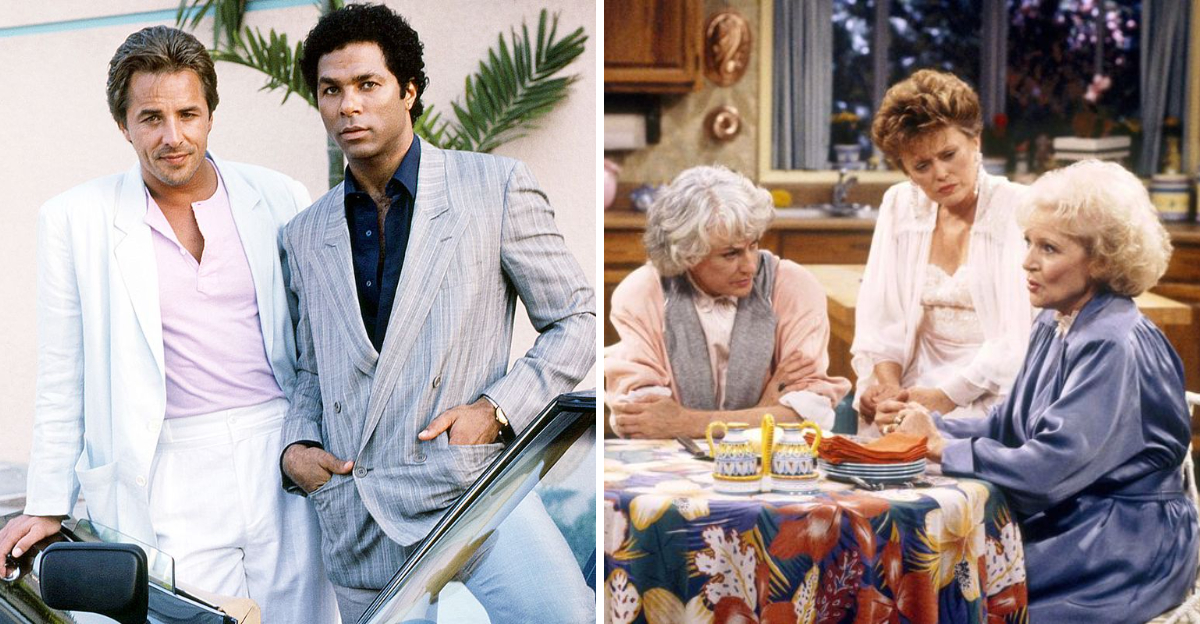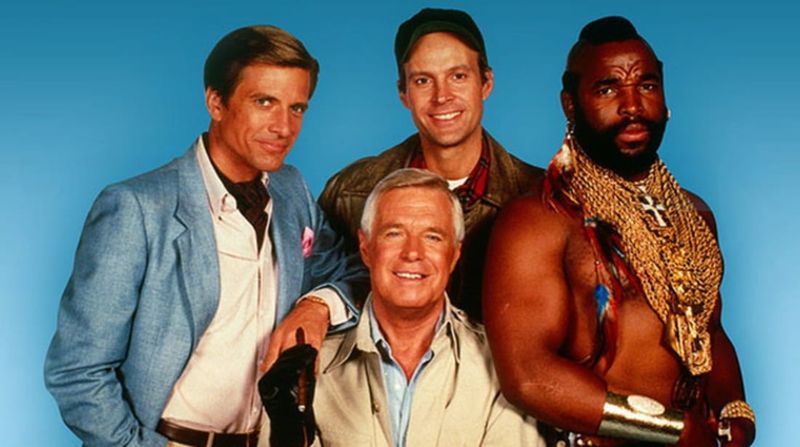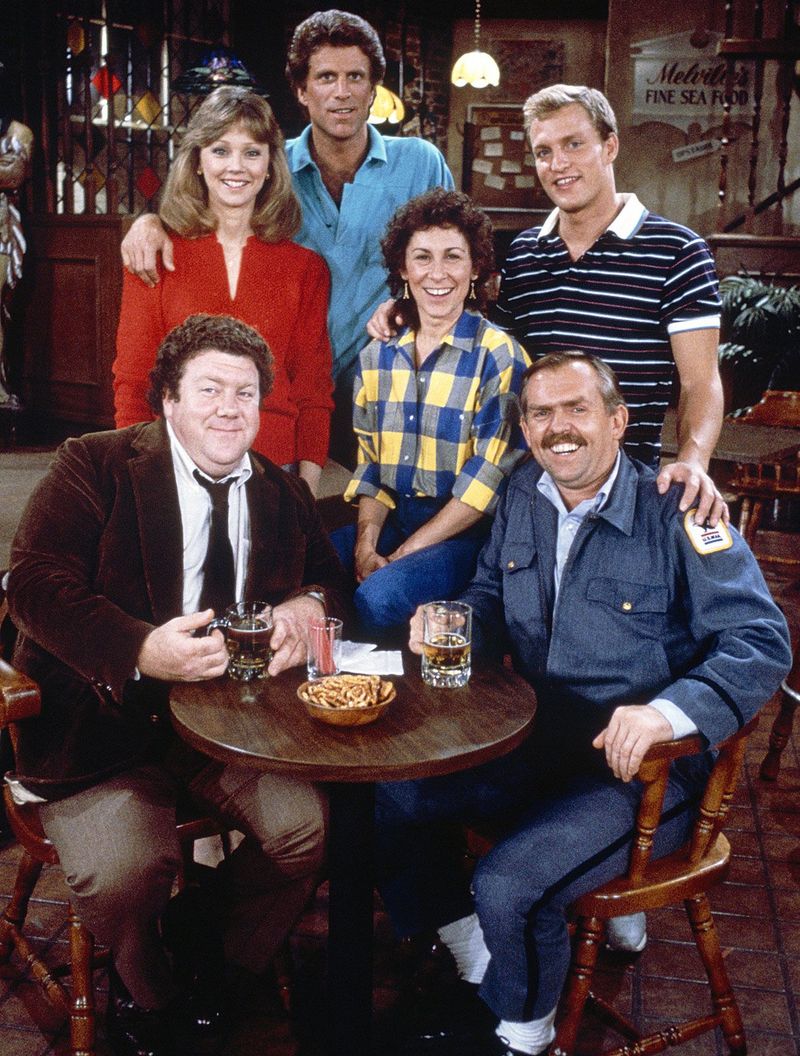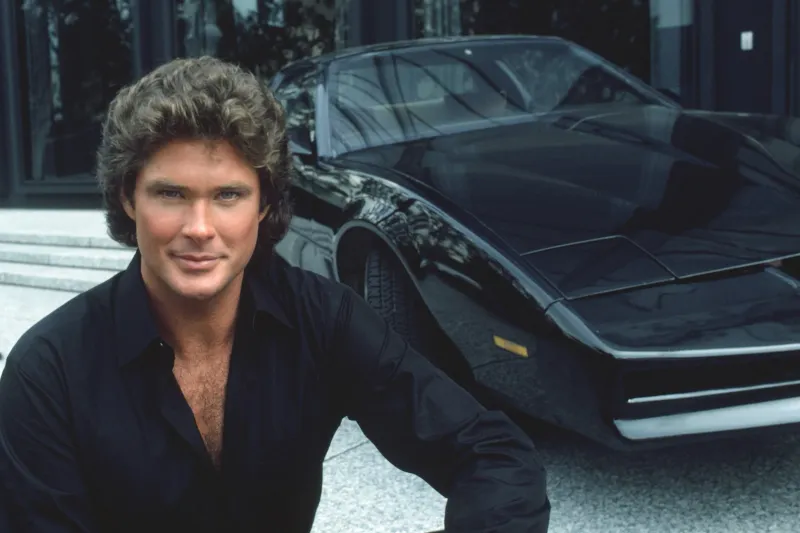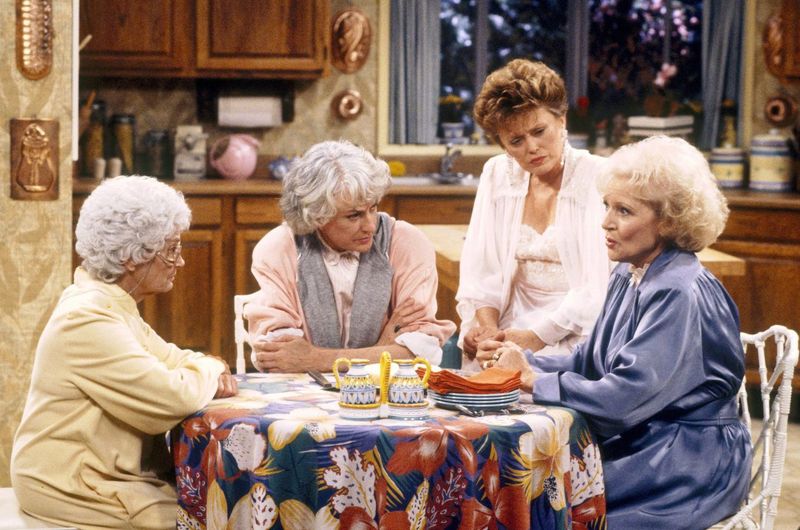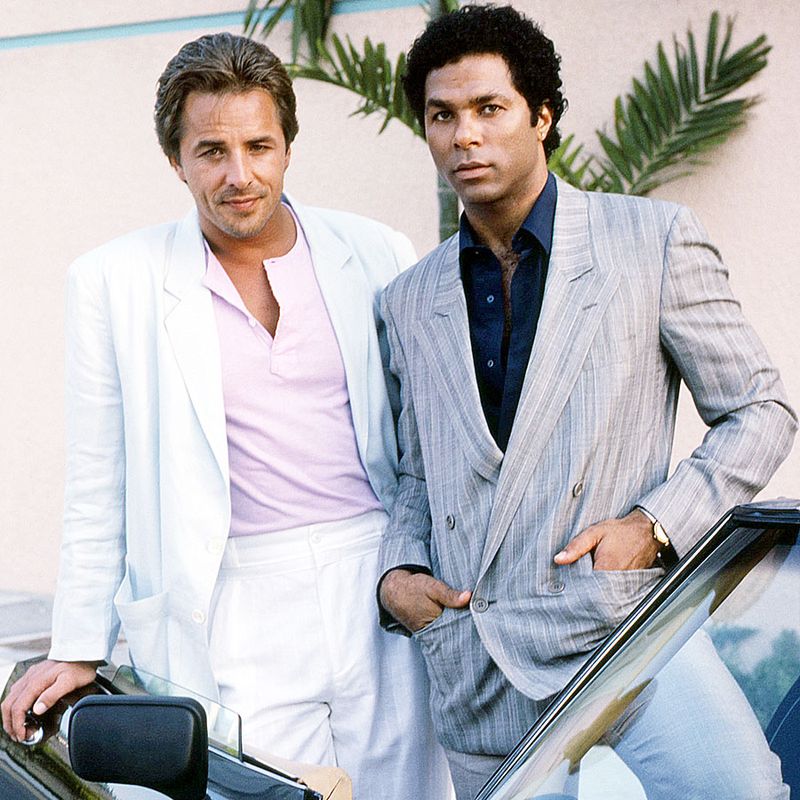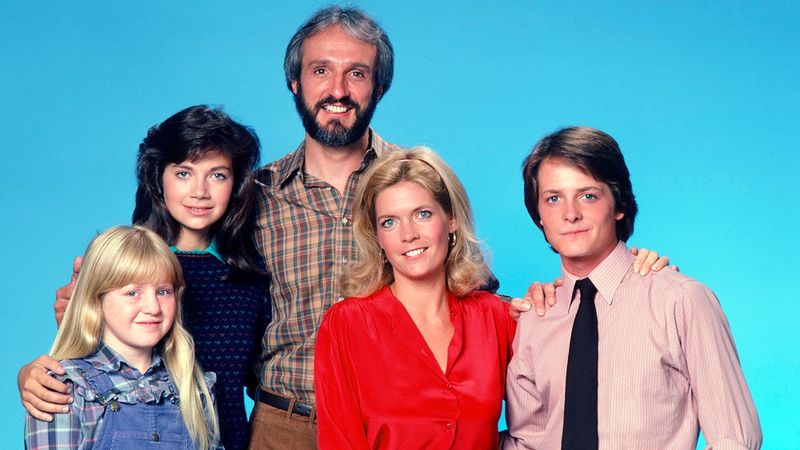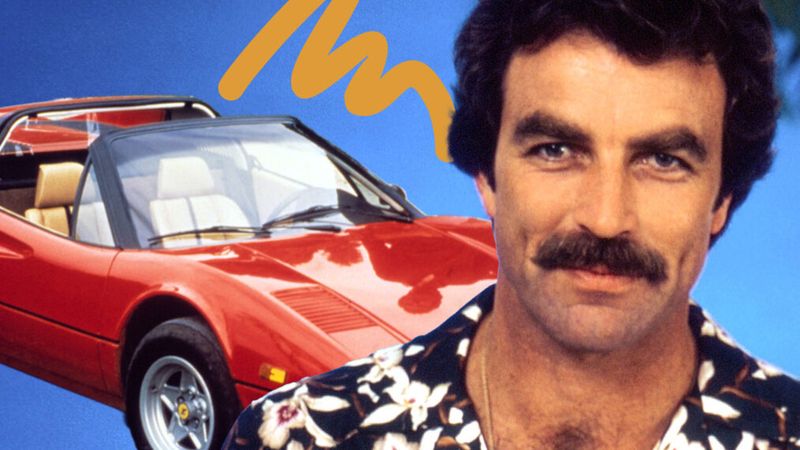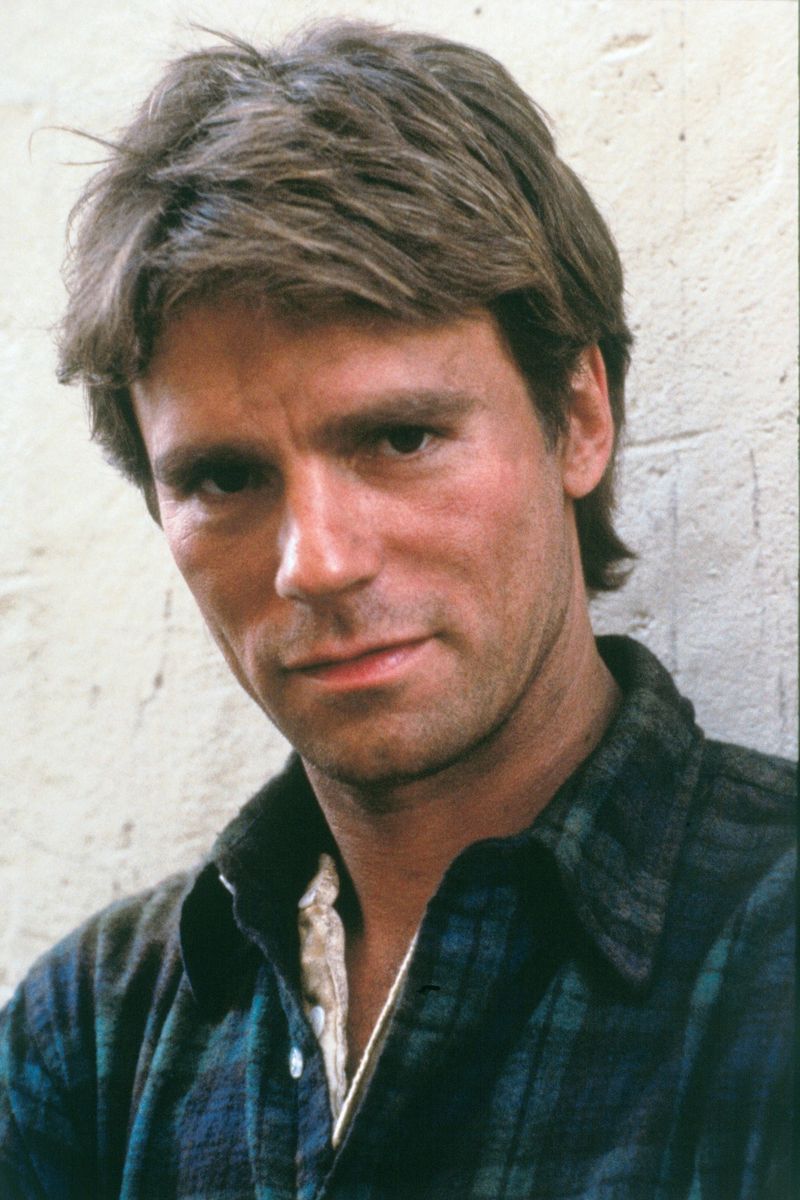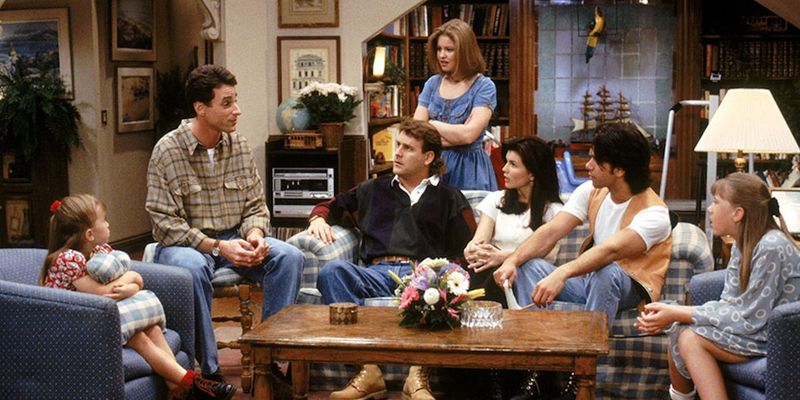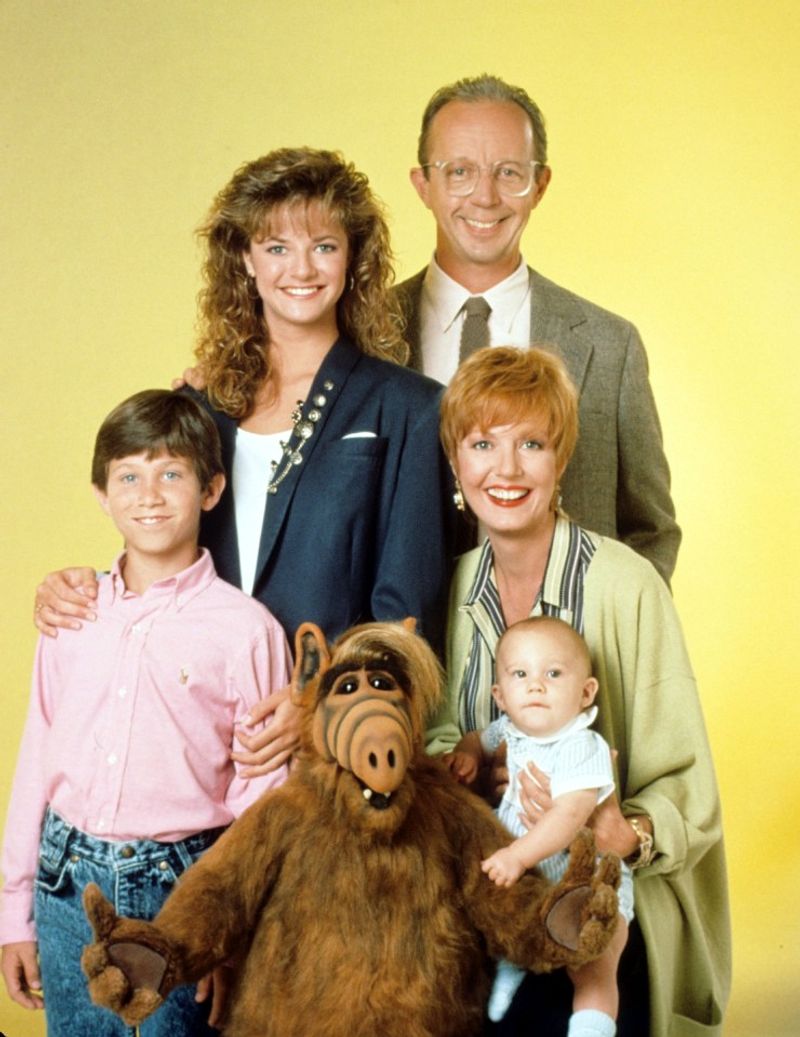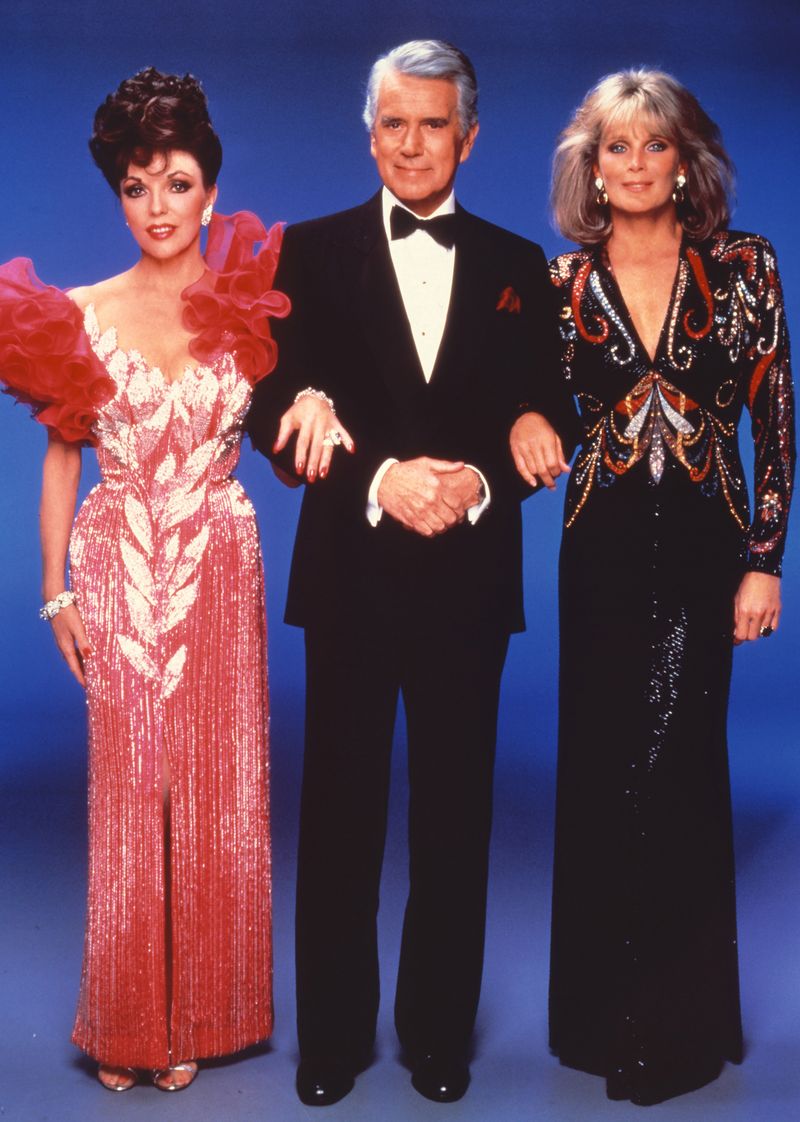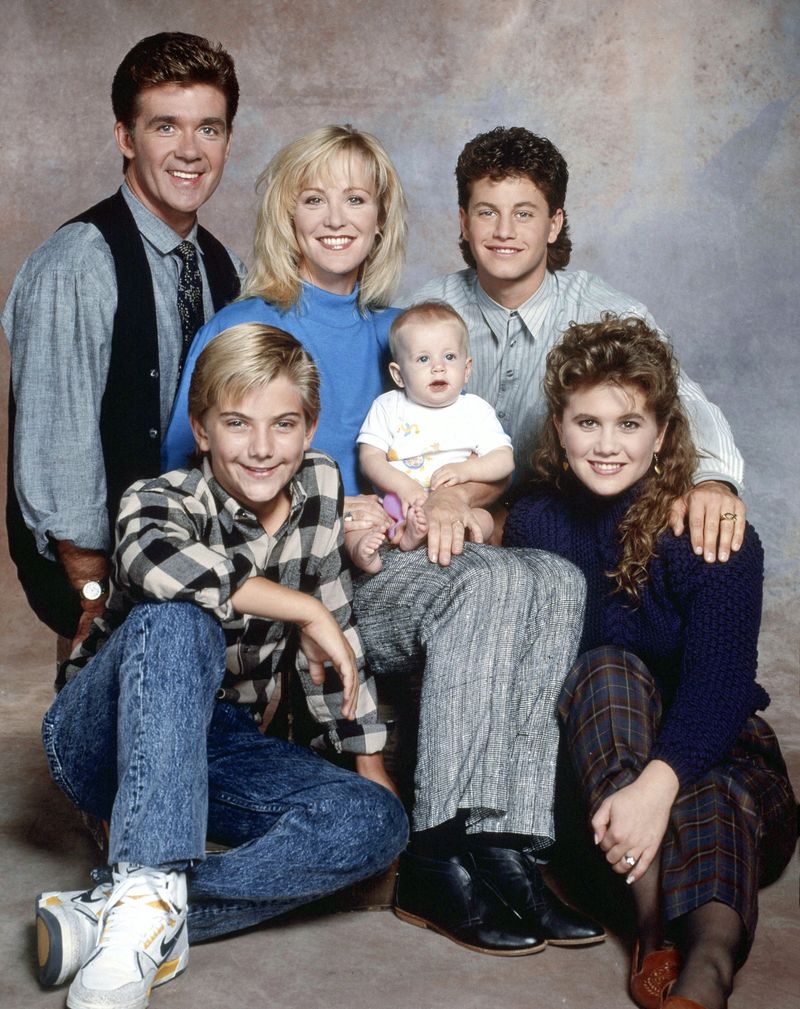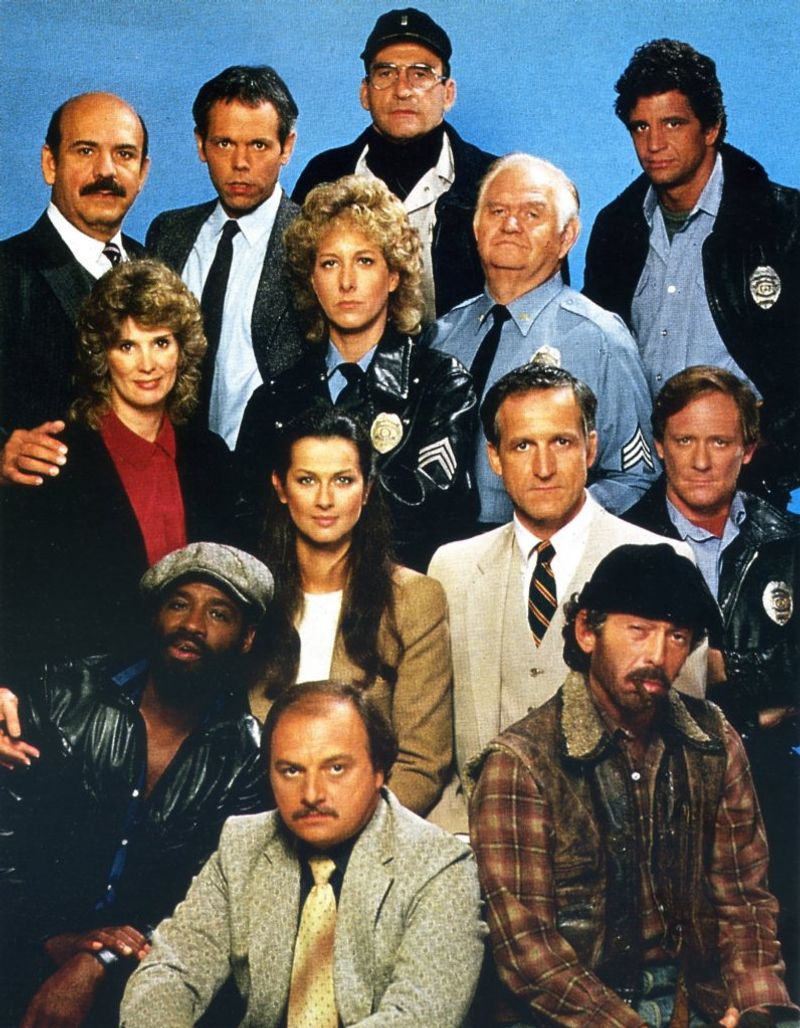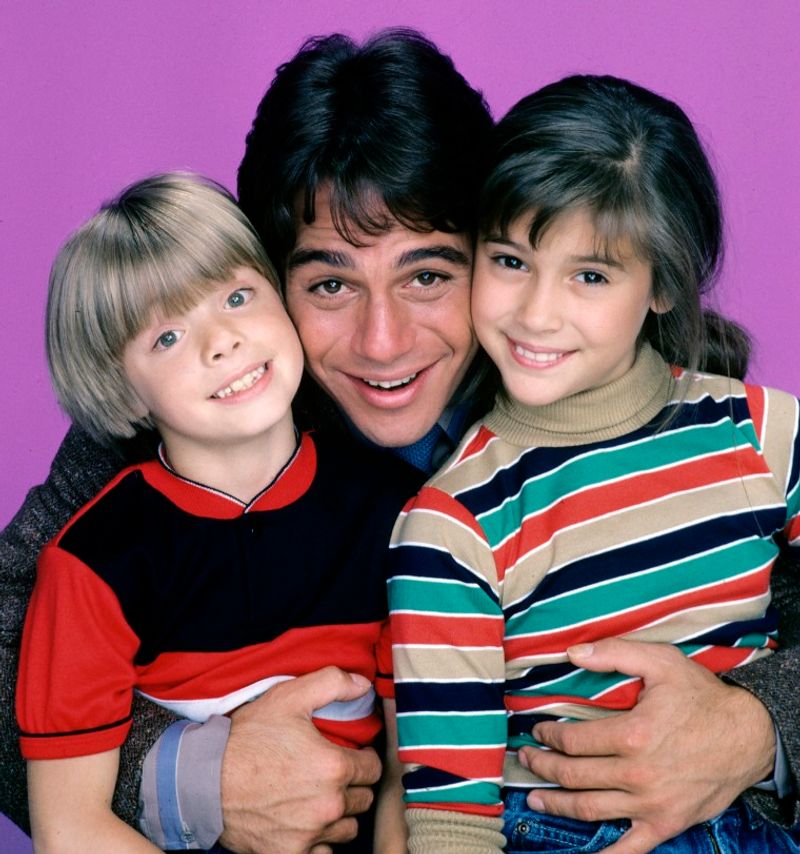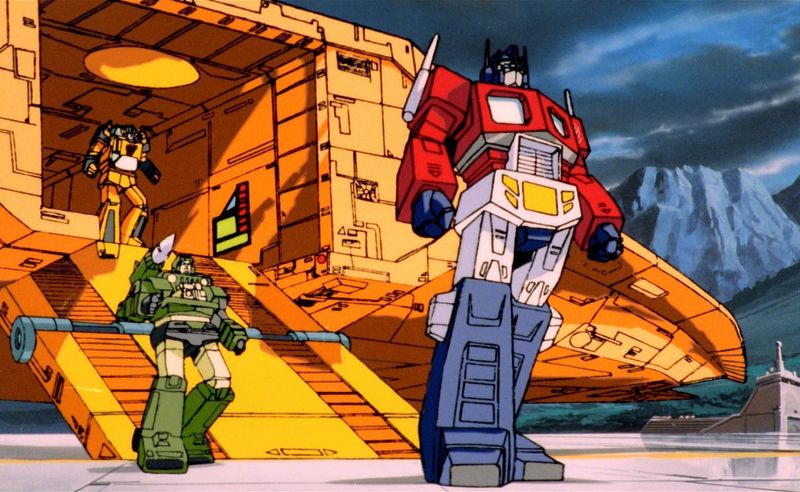Remember when TV wasn’t available on demand or streamed through apps? The 1980s brought us some of the most memorable television shows ever created. These classics didn’t need fancy special effects or complicated storylines to capture our hearts. They relied on great characters, simple storytelling, and themes that still connect with viewers today.
1. The A-Team: Heroes with a Plan
Four Vietnam veterans falsely accused of a crime they didn’t commit became unlikely heroes for hire. Led by cigar-chomping Hannibal Smith, this crew turned ordinary vehicles into armored masterpieces and outfoxed bad guys with elaborate schemes.
What made The A-Team special was its perfect formula – Mr. T’s iconic mohawk and gold chains, Face’s smooth-talking charm, and Murdock’s wild antics. Despite all the explosions and gunfire, nobody ever seemed to get seriously hurt.
Fun fact: The A-Team’s famous van was a 1983 GMC Vandura, and original versions now sell for small fortunes among collectors!
2. Cheers: Where Everybody Knows Your Name
Boston’s favorite basement bar became our second home for 11 seasons. The show’s genius lay in its perfect ensemble cast – from Ted Danson’s womanizing bartender Sam to Shelley Long’s intellectual waitress Diane, creating television’s most memorable will-they-won’t-they romance.
Each character brought something unique – Norm’s grand entrances, Cliff’s bizarre trivia, and Coach’s (later Woody’s) lovable confusion. The bar setting created an intimate stage where everyday conversations became comedy gold.
Remarkably, Cheers started with poor ratings but network executives believed in it, allowing the show to grow into one of television’s most beloved sitcoms.
3. Knight Rider: Man and Machine
David Hasselhoff cruising in a talking Pontiac Trans Am was pure ’80s magic. KITT wasn’t just any car – this artificial intelligence had personality, sass, and could outrace anything on wheels while protecting Michael Knight during his missions.
The show perfectly blended cutting-edge technology (for the time) with action-adventure storylines. That sleek black car with its scanning red light became one of TV’s most recognizable symbols.
Knight Rider captured our imagination by suggesting cars could become our partners and protectors. Nearly four decades later, with self-driving vehicles becoming reality, the show seems almost prophetic!
4. The Golden Girls: Friendship Never Ages
Four older women sharing a home in Miami created comedy gold through their unlikely friendship. Dorothy’s sarcasm, Blanche’s flirtations, Rose’s naive stories about St. Olaf, and Sophia’s brutal honesty formed a perfect comedic quartet.
The show tackled serious issues like aging, death, and sexuality with remarkable grace and humor. Their late-night kitchen table conversations over cheesecake became iconic moments where wisdom and wit blended perfectly.
The Golden Girls revolutionized television by proving women over 50 could lead a hit show. Its enduring popularity across generations proves great characters and sharp writing never go out of style.
5. Miami Vice: Style Meets Substance
Detectives Crockett and Tubbs redefined cool with their designer suits, fast cars, and soundtrack that dominated the charts. The show’s visual style – pastel colors, architectural shots, and MTV-inspired editing – made it unlike anything else on television.
Beyond the flashy exterior was a surprisingly gritty crime drama. Episodes explored the moral complexities of undercover work and the personal toll of fighting Miami’s drug trade.
Creator Michael Mann insisted on filming in actual Miami locations rather than studio sets, giving the show its distinctive atmosphere. Miami Vice’s influence extended far beyond television, inspiring fashion trends and music videos throughout the decade.
6. Family Ties: Generation Gap Comedy
The Keaton household perfectly captured America’s political transition from 1960s idealism to 1980s conservatism. Former hippie parents Steven and Elyse watched in bewilderment as their son Alex (Michael J. Fox) embraced Reagan-era economics and wore ties to breakfast.
Fox’s portrayal of the ambitious, Republican-loving Alex P. Keaton launched him to stardom. His comedic timing and chemistry with the cast elevated simple family situations into memorable moments.
While the political humor gave Family Ties its unique angle, the show’s heart was its portrayal of unconditional family love despite differing worldviews – a message that remains relevant in today’s polarized times.
7. Magnum, P.I.: Paradise with Problems
Tom Selleck’s mustache and Hawaiian shirts became cultural icons as he portrayed Thomas Magnum, a private investigator living in a luxury estate. The show’s winning formula combined beautiful Hawaiian scenery, action-packed cases, and Magnum’s entertaining battles of wit with stuffy estate manager Higgins.
Behind the tropical paradise and lighthearted banter lay surprising depth. Magnum and his friends were Vietnam veterans dealing with their experiences through flashbacks and storylines that humanized the war’s impact.
The Ferrari 308 GTS that Magnum drove became so popular that Ferrari couldn’t keep up with demand during the show’s run. Hawaii’s tourism industry also boomed as viewers dreamed of visiting the show’s filming locations.
8. MacGyver: Brains Over Brawn
Richard Dean Anderson’s resourceful secret agent showed us weekly how ordinary objects could solve extraordinary problems. Armed with scientific knowledge, a Swiss Army knife, and duct tape, MacGyver disarmed bombs and escaped death traps without ever using guns.
The show’s unique approach to heroism emphasized intelligence and creativity over violence. “MacGyverisms” – his improvised solutions – became so popular that the character’s name entered the dictionary as a verb meaning to fix something ingeniously.
Surprisingly educational, MacGyver explained the scientific principles behind his inventions, inspiring countless science teachers to reference the show in their classrooms. Its influence continues with terms like “MacGyvering” still common in everyday language.
9. Full House: Heartwarming Family Comedy
Three men raising three girls in San Francisco created the ultimate comfort-food television. After losing his wife, Danny Tanner enlisted his brother-in-law Jesse and best friend Joey to help raise his daughters, creating an unconventional but loving family unit.
Each episode followed a reliable formula – family mishap, heart-to-heart talk, and group hug resolution. The Olsen twins as youngest daughter Michelle stole scenes with catchphrases like “You got it, dude!” while Uncle Jesse’s obsession with his hair provided running comedy.
Though critics dismissed it as overly sentimental, Full House’s warmth and positive messages made it a family favorite that parents felt comfortable sharing with children.
10. ALF: Alien Life Form Comedy
A furry alien crash-lands in suburban America and moves in with the Tanner family. ALF (Alien Life Form) brought outrageous humor to primetime with his sarcastic personality and constant attempts to eat the family cat, Lucky.
The puppet character, operated by creator Paul Fusco, somehow expressed more personality than many human actors. ALF’s fish-out-of-water situation created endless comedic possibilities as he learned about Earth culture while hiding from government agencies.
Behind the scenes, the show was notoriously difficult to produce. The ALF puppet required four puppeteers working in a raised floor beneath the set, forcing actors to carefully navigate marked positions during filming.
11. Dynasty: Glamorous Power Struggles
Before the Kardashians, there were the Carringtons – oil tycoon Blake, his new wife Krystle, and his vengeful ex-wife Alexis battling for control of Denver-Carrington. Joan Collins’ portrayal of the scheming Alexis Carrington set the standard for television villains with her cutting remarks and elaborate plots.
The show reveled in excess – extravagant mansions, designer fashions, and over-the-top catfights that became its signature. Dynasty captured the materialistic spirit of the 1980s while delivering addictive melodrama.
The series became so influential that its lavish fashion sense, created by costume designer Nolan Miller, inspired real-world clothing lines. Each episode featured approximately 120 costume changes, an unprecedented number for television.
12. Growing Pains: Authentic Family Life
The Seaver family brought realistic family dynamics to sitcom format. Psychiatrist dad Jason worked from home while journalist mom Maggie returned to work – a progressive arrangement for 1980s television that reflected changing American households.
Kirk Cameron’s portrayal of troublemaking teen Mike Seaver made him a massive heartthrob. The show excelled at balancing comedy with genuine emotional moments, particularly as the children navigated adolescence.
Growing Pains stands out for evolving with its characters rather than keeping them static. The Seavers faced increasingly complex challenges as the series progressed, from dating dilemmas to college decisions, maintaining its relevance throughout its seven-season run.
13. Hill Street Blues: Revolutionary Police Drama
“Let’s be careful out there” became television’s most famous roll call as Hill Street Blues transformed police dramas forever. Set in an unnamed American city, the show portrayed cops as complex humans rather than one-dimensional heroes.
The series pioneered techniques now standard in television – handheld cameras, overlapping dialogue, and season-long story arcs. Its gritty realism showed both the professional and personal struggles of officers working in a challenging urban environment.
Creator Steven Bochco fought network executives to maintain the show’s multiple storylines and morally ambiguous characters. His persistence paid off – Hill Street Blues won 26 Emmy Awards and influenced virtually every police drama that followed.
14. Who’s the Boss?: Role Reversal Comedy
Former baseball player Tony Micelli takes a job as housekeeper for high-powered advertising executive Angela Bower, turning gender expectations upside down. Tony Danza and Judith Light’s chemistry created one of television’s most memorable will-they-won’t-they relationships that spanned eight seasons.
The show tackled changing gender roles with humor rather than preachiness. Tony’s traditional Italian-American values contrasted with Angela’s career ambition, while their children added complications to the household dynamics.
Alyssa Milano grew up on screen as Tony’s daughter Samantha, evolving from tomboy to teenager. The show’s greatest strength was allowing its characters to develop naturally over time while maintaining its core theme about defining family beyond traditional boundaries.
15. Transformers: Robots in Disguise
The battle between Autobots and Decepticons captivated children every Saturday morning. These alien robots that transformed into vehicles and everyday objects created the perfect combination of cool concept and toyetic appeal.
Optimus Prime’s noble leadership and Megatron’s ruthless villainy established an iconic hero-villain dynamic. Voice actor Peter Cullen’s portrayal of Optimus Prime was so beloved that fans demanded his return for the modern film adaptations decades later.
The original theme song – “Robots in disguise, more than meets the eye” – remains instantly recognizable to generations of fans. Though created primarily to sell toys, the show’s surprisingly deep mythology and character development elevated it beyond typical cartoon fare.
